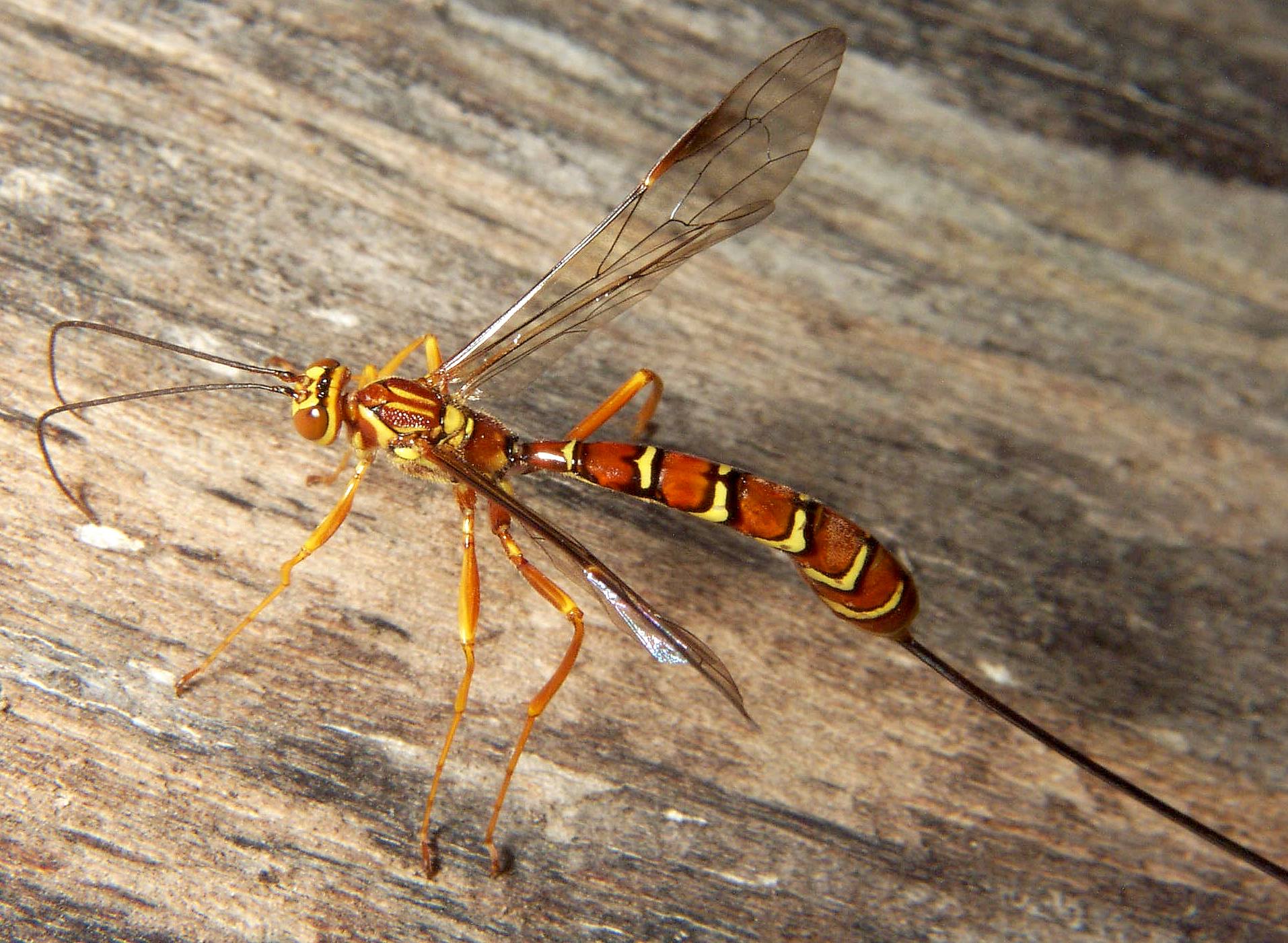- Ichneumonoidea
Taxobox
name = Ichneumonoidea

image_width = 250px
image_caption = "Megarhyssa macrurus " Female
regnum =Animal ia
phylum =Arthropoda
classis =Insecta
ordo =Hymenoptera
subordo =Apocrita
superfamilia = Ichneumonoidea
subdivision_ranks = Families
subdivision =Braconidae Ichneumonidae The Ichneumonoidea are
insect s classified in thehymenoptera nsuborder Apocrita . Thesuperfamily is made up of theichneumon wasp s (often inaccurately called "ichneumon flies"; family Ichneumonidae) and thebraconid s (family Braconidae). Like otherparasitic wasp s, they were long placed in the "Parasitica", variously considered as aninfraorder or an unrankedclade , but actually not amonophyletic group.The superfamily Ichneumonoidea has been estimated to contain well over 80,000 different species. The ichneumon wasps are more familiar to non-
entomologist s, being larger and about three times as diverse as the braconids.They are solitary insects, and most are
parasitoid s—thelarvae feeding on or in another insect which finally dies. As with all hymenopterans, ichneumons are closely related toant s andbee s.Members of the family Ichneumonidae are usually larger than members of the Braconidae, and are distinguished primarily by details of wing venation. Many species in both families utilize
polydnavirus es to suppress the immune system of the host insect.Some members use many different insects as a host, others are very specific in host choice. Various ichneumons are used successfully as biological control agents in controlling pests such as flies or
beetle s.Ichneumon wasp species are highly diverse - ranging from 3mm (1/8-inch) to 13 cm (5 inches) long. Most are slender, with the females of many species (particularly in the genus "
Megarhyssa ") having an extremely longovipositor for laying eggs. The female finds a host and lays an egg on, near, or inside the host's body. Upon hatching, the larval ichneumon feeds either externally or internally, killing the host when they themselves are ready to pupate. Despite looking formidable, the ovipositor does not deliver a sting like many wasps or bees. It can be used by the wasps to bore into and lay eggs inside rotten wood.Charles Darwin found the grisly life cycles of ichneumons wasps incompatible with the central notion ofnatural theology which saw the study of nature as a way to demonstrate God's benevolence. In a letter to American botanistAsa Gray , Darwin wrote"I cannot persuade myself that a beneficent and omnipotent God would have designedly created the Ichneumonidae with the express intention of their feeding within the living bodies of Caterpillars, or that a cat should play with mice."
External links
* [http://cirrusimage.com/hymenoptera_ichneumonidae.htm Reference large-format photos of 15 different species of Ichneumonidae]
* An [http://mdc.mo.gov/conmag/2002/05/30.htm interesting account] of an observer's encounter with Ichneumons.
* [http://eny3005.ifas.ufl.edu/lab1/Hymenoptera/Ichneumonid.htm University of Florida Department of Entomology & Nematology page about Ichneumons]
* [http://bugguide.net/node/view/150/bgpage BugGuide page: Family Ichneumonidae - Ichneumon Wasps]
Wikimedia Foundation. 2010.
